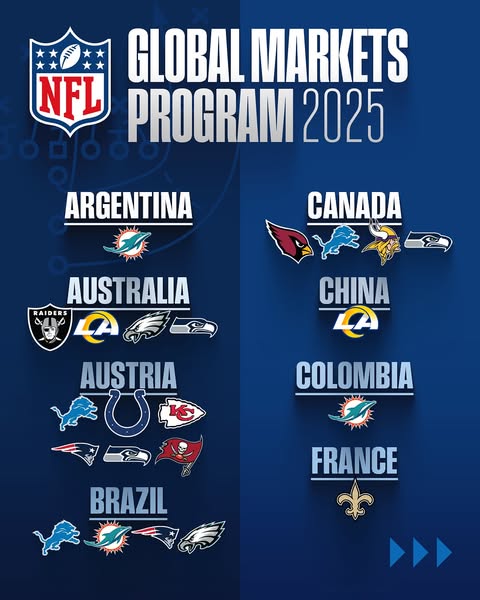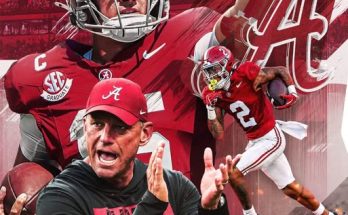In a groundbreaking move aimed at expanding its global presence, the National Basketball Association (NBA) has taken a monumental step by pushing deeper into international markets in 2025. With 29 of its 30 teams now actively engaging in 21 different international markets, the league is cementing itself as the premier global basketball authority and a cultural phenomenon reaching far beyond the United States. This ambitious effort to grow fan bases and build brands worldwide underscores the NBA’s commitment to spreading the love of basketball across diverse audiences, fostering deeper connections through localized strategies, and leveraging the global appeal of its star athletes.
The NBA has long been considered one of the most globally recognized sports leagues, but this new strategy represents a significant evolution in how the league views its relationship with the world. Rather than merely broadcasting games internationally, teams are now focusing on active, on-the-ground engagements designed to build deeper relationships with fans. This strategic pivot comes after years of studying emerging markets, assessing fan interest, and collaborating with local stakeholders to understand the unique cultural dynamics of each region.
Leading this international charge are some of the league’s most iconic franchises, including the Los Angeles Lakers, Golden State Warriors, and New York Knicks. These teams are spearheading efforts in markets where basketball interest has surged in recent years, such as China, India, Brazil, and parts of Europe. By establishing youth training academies, hosting exhibition games, and creating localized content, these franchises are embedding themselves into the fabric of their new host communities.
One of the primary catalysts behind this expansion is the NBA’s acknowledgment of how much international players have shaped the modern game. The rise of superstars like Giannis Antetokounmpo from Greece, Luka Dončić from Slovenia, and Nikola Jokić from Serbia has demonstrated that basketball excellence knows no borders. These players are not only representing their respective NBA teams but also serving as ambassadors of the sport in their home countries and beyond. The NBA’s strategy leverages this star power to build lasting connections and inspire future generations of athletes from around the world.
Central to the expansion effort is a multi-faceted approach that blends community engagement with digital innovation. Teams are increasingly focusing on creating localized content that resonates with specific cultures, often collaborating with local influencers and media outlets to maximize reach. Digital platforms play a crucial role, as the NBA’s social media presence continues to grow exponentially, with international followers outnumbering domestic ones. By offering live streams, behind-the-scenes content, and interactive fan experiences in multiple languages, the league ensures that global audiences feel included and engaged.
One particularly innovative aspect of the NBA’s global strategy is the introduction of regional partnerships that foster grassroots development. These partnerships involve collaboration with local basketball associations, schools, and youth programs to cultivate talent and foster enthusiasm for the sport from a young age. In Africa, for example, the NBA has deepened its partnership with Basketball Africa League (BAL), creating pathways for African talent to reach the NBA while also boosting local leagues and fostering competition at a continental level.
Despite the unprecedented nature of this expansion, the NBA remains mindful of the challenges that come with operating on a global scale. Differences in cultural expectations, time zone variations for live broadcasts, and the risk of overextending resources all pose potential obstacles. To address these challenges, the league has adopted a region-specific approach, allowing each team the flexibility to tailor their initiatives to local preferences. This nuanced strategy is designed to maintain authenticity while fostering genuine fan connections rather than imposing a one-size-fits-all model.
Financially, the NBA’s expansion is expected to bring significant returns as teams build new revenue streams through international sponsorship deals, merchandise sales, and local broadcasting rights. By capitalizing on the increasing popularity of basketball globally, franchises are not only growing their fan bases but also significantly boosting their valuations. Analysts predict that the league’s global revenue could increase by 30% over the next five years, driven largely by new international partnerships and enhanced market penetration.
One notable success story has been the Golden State Warriors’ partnership in Japan, where the team has established basketball clinics and hosted fan meet-and-greet events. The Warriors have also collaborated with Japanese content creators to produce game highlights and exclusive player interviews with subtitles, making the content accessible to local audiences. These efforts have cultivated a passionate Japanese fanbase and elevated the Warriors’ brand on an international stage.
Similarly, the Houston Rockets have continued to build on their long-established ties to China, creating interactive fan experiences and launching a Mandarin-language mobile app to provide news, updates, and exclusive content. This digital-first approach has strengthened the team’s connection with Chinese fans, maintaining their relevance despite challenges related to previous political controversies.
Meanwhile, European markets have embraced the presence of NBA teams, with countries like France, Spain, and Germany becoming key hubs for fan engagement. Teams such as the Milwaukee Bucks and Dallas Mavericks have capitalized on their European superstars by organizing promotional tours and community events that resonate with local basketball enthusiasts. Additionally, the NBA has partnered with major European broadcasters to ensure games are available at convenient times, minimizing the disruption caused by time zone differences.
Latin America has also proven to be a fertile ground for NBA growth, with countries like Brazil, Argentina, and Mexico leading the charge. The league has focused on cultivating basketball culture through school programs and youth leagues, providing opportunities for young athletes to develop their skills while fostering lifelong fandom. The NBA Mexico City Game, an annual fixture, continues to draw sellout crowds and captivate local audiences, showcasing the league’s commitment to growing basketball’s popularity south of the border.
As the NBA continues to extend its influence around the globe, one of the most critical factors remains the ability to adapt and innovate. By prioritizing local partnerships and embracing diverse cultural contexts, the league ensures that its expansion efforts are more than just business ventures—they are meaningful contributions to the communities they touch. This commitment to building relationships rather than simply chasing profits has been central to the NBA’s enduring success, and it remains a key driver as the league steps confidently into a more interconnected future.
Looking ahead, the NBA plans to continue evaluating additional markets and refining its global strategy to stay ahead of the curve. As the league’s influence continues to expand, fans from every corner of the globe will increasingly feel connected to the excitement and passion that defines professional basketball. The NBA’s vision for the future is clear: a truly global game that unites people from all walks of life under the shared love of basketball.



